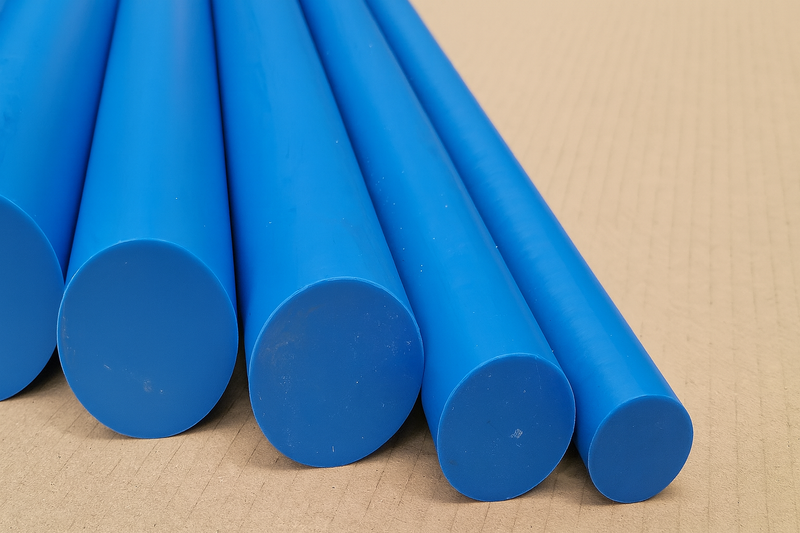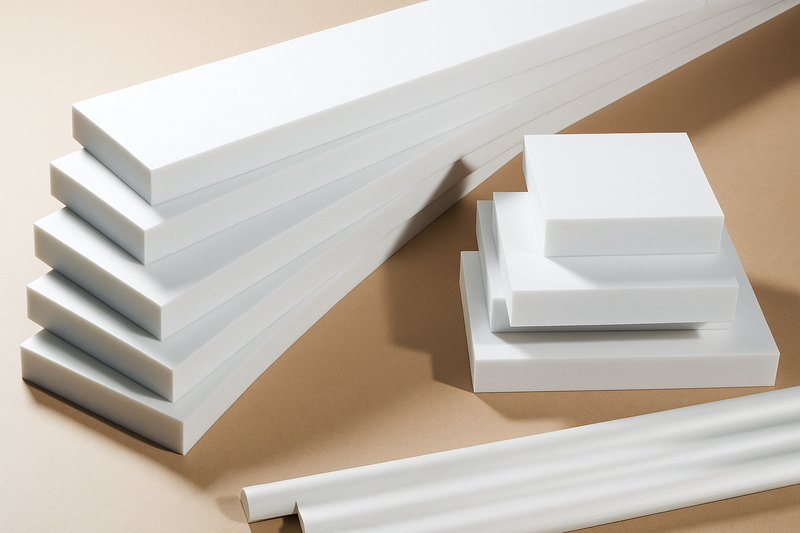At a glance
- Material safety: Chemical resistance is crucial; HDPE, PET, and PP are preferred.
- Regulatory compliance: Adherence to FDA standards and migration testing is essential.
- Durability: Resistance to degradation and contamination; Polypropylene exemplifies.
The quality of food-grade plastics plays a pivotal role in protecting consumer health and ensuring the integrity of the products we consume daily. As we navigate through the complexities of manufacturing and packaging applications, understanding the factors that influence the quality of these plastics becomes paramount.
This blog post aims to demystify the essential criteria determining food-grade plastic quality. It focuses on material resistance, compliance with regulatory standards, and the supply chain's transparency and traceability.
Material Resistance and Safety
First and foremost, the resistance of food-grade plastics to chemical leaching is a critical factor in their quality. Plastics such as High-Density Polyethylene (HDPE), Polyethylene Terephthalate (PET), and Polypropylene (PP) are favoured for their robust chemical resistance properties. These materials are less likely to release harmful substances into food, making them safe for consumer use.
For example, HDPE, a preferred choice for long-term food storage, boasts an impressive strength-to-density ratio, ensuring durability while preventing contamination.
However, not all plastics are created equal. The controversy surrounding Bisphenol A (BPA) in polycarbonate plastics highlights the importance of selecting materials that do not compromise health.
The FDA's stance that BPA is safe at low exposure levels does not negate the growing concerns and demands for BPA-free alternatives.
As a result, engineering plastics suppliers are increasingly focusing on providing materials that meet these safety criteria without sacrificing performance.
Compliance with Regulatory Standards
Secondly, adherence to regulatory standards is a non-negotiable aspect of food-grade plastic quality. The FDA plays a crucial role in evaluating and approving plastics for food contact. This involves rigorous testing to ensure that the plastics do not adversely affect the food's colour, odour, or taste.
Materials must withstand various conditions, including temperature ranges and exposure to greases and alcohols, to receive approval. Thus, compliance with these standards is a testament to a plastic's suitability for food-grade applications.
Durability and Contamination Resistance
The ability of food-grade plastics to resist degradation or contamination over time is another vital factor. This pertains not only to the physical durability of the material but also to its ability to maintain integrity under repeated use and cleaning.
Polypropylene, for instance, is renowned for its high melting point, making it suitable for microwave and dishwasher use without degrading. This resilience against breaking and bending ensures that the containers can be reused safely, reducing the risk of contamination.
Transparency and Traceability in the Supply Chain
Finally, the transparency and traceability of the supply chain are imperative for ensuring the quality of food-grade plastics. From the raw material sourcing to the manufacturing process, every step must be documented and meet quality standards.
An engineering plastics supplier must maintain a rigorous quality assurance process, including ISO 9000 certification and good manufacturing practices. This ensures that the final product is not only made from high-quality materials but also produced in a manner that guarantees safety and compliance.
Understanding Food-Grade Plastics
Let's delve into the characteristics of various food-grade plastics, including Acetal, Cast Nylon, HDPE, PEEK, PET, Polycarbonate, PTFE, and UHMWPE, offering insights on how each contributes to the safe handling and packaging of food.
Acetal Plastic
First of all, Acetal Plastic is renowned for its strength, rigidity, and resistance to wear. This engineering plastic, supplied by specialised engineering plastics suppliers, is ideal for food processing machinery parts that require precision, such as gears, bushings, and bearings.
Its low moisture absorption rate ensures that it does not swell or degrade in wet environments, making it suitable for use in food production environments where consistency and durability are paramount.
Cast Nylon
Secondly, Cast Nylon stands out for its versatility and strength. It's an excellent candidate for food-grade applications due to its ability to replace metal in many instances, reducing weight and improving corrosion resistance.
Cast Nylon is used in a variety of food processing equipment, from cutting boards to conveyor belt components, offering a durable and non-toxic solution for direct food contact applications.
HDPE Plastic
HDPE Plastic, or High-Density Polyethylene, is a staple in the food packaging industry. This food-grade plastic is preferred for its safety and reliability and is commonly found in water bottles, milk jugs, and containers for butter or yoghurt.
HDPE's resistance to chemicals and impact makes it an excellent choice for packaging that needs to protect its contents from contamination and external damage.
PEEK Plastic
PEEK Plastic, known for its high-temperature resistance and mechanical strength, is another critical player in the food-grade plastic arena. Its ability to withstand extreme environments makes it suitable for components in ovens and other high-temperature processing equipment.
PEEK's excellent wear resistance and low leaching characteristics ensure that it does not contaminate the food it comes into contact with, aligning with the stringent standards for food safety.
PET Plastic
PET Plastic, or Polyethylene Terephthalate, is ubiquitous in the food packaging world, especially for single-use bottles and containers. This plastic is favoured for its clarity, strength, and recyclability, making it a sustainable option for packaging drinks, oils, and sauces.
PET's barrier properties also help preserve the freshness and flavour of the contents, making it a go-to choice for food-grade applications.
Polycarbonate Plastic
Polycarbonate Plastic is noted for its clarity and exceptional impact resistance, making it ideal for creating durable, transparent containers that can withstand drops and falls. This plastic is often used in water and baby bottles, as well as food storage containers.
However, due to concerns about BPA, engineering plastics suppliers and manufacturers are cautious in selecting the appropriate grade of Polycarbonate for food contact applications, ensuring safety and compliance with regulatory standards.
PTFE Plastic
PTFE Plastic, widely known as Teflon, offers unparalleled non-stick properties and chemical inertness. It is perfect for food processing applications where easy cleanup and resistance to corrosive materials are essential.
PTFE coatings are commonly found on cookware, baking trays, and utensils, providing a safe, non-toxic surface that prevents food from sticking and burning.
UHMWPE Plastic
Finally, UHMWPE Plastic, or Ultra-High Molecular Weight Polyethylene, excels in wear and abrasion resistance. This food-grade plastic is used in a variety of applications, including cutting boards, chute liners, and conveyor components, where its low friction surface helps in the efficient handling of food products.
UHMWPE's resistance to chemicals and impact ensures long-lasting performance in harsh food processing environments.
Seeking Expert Guidance?
If you're navigating the vast world of food-grade plastics and seeking expert guidance, high-quality materials, and customised solutions, look no further than ePol. Our team of experts is dedicated to providing you with the best materials for your specific applications, ensuring compliance with regulatory standards and enhancing the safety and integrity of your food products.
Don't compromise on the safety and quality of your food contact applications. Reach out to ePol today for all your plastic needs, and let us help you find the perfect solution that meets your requirements and exceeds your expectations.
In conclusion, the quality of food-grade plastics is influenced by a multitude of factors, including material safety, regulatory compliance, durability, and supply chain transparency. As consumers become more aware of the potential health risks associated with certain plastics, the demand for high-quality, safe, and reliable food-grade materials increases.
Engineering plastics suppliers play a crucial role in meeting this demand by providing materials that adhere to the strictest safety and quality standards.








